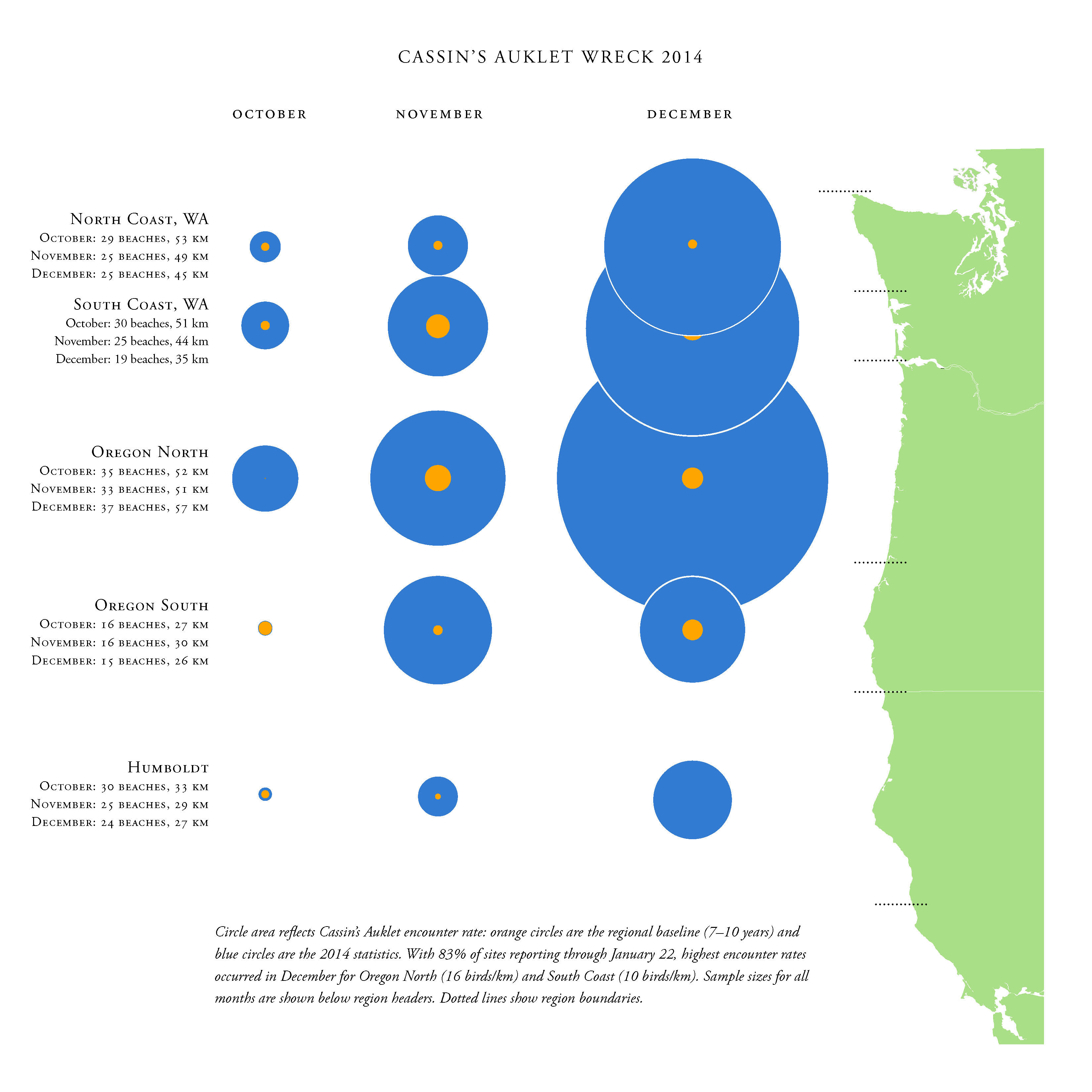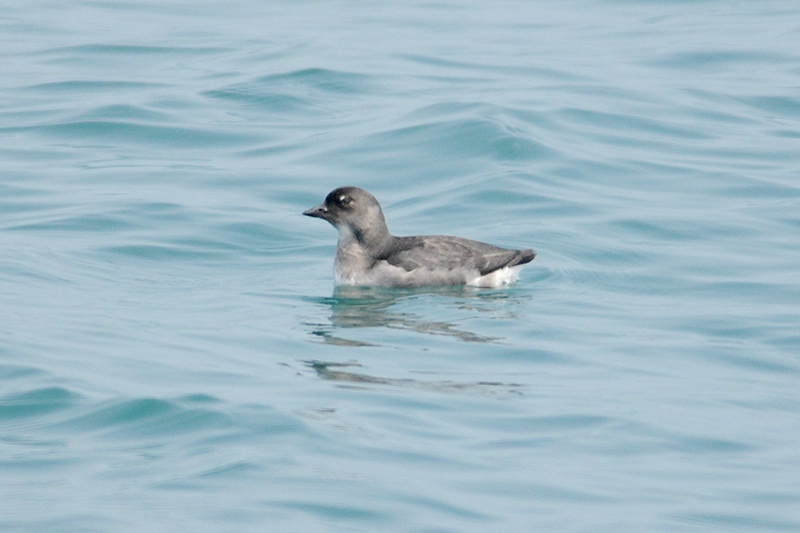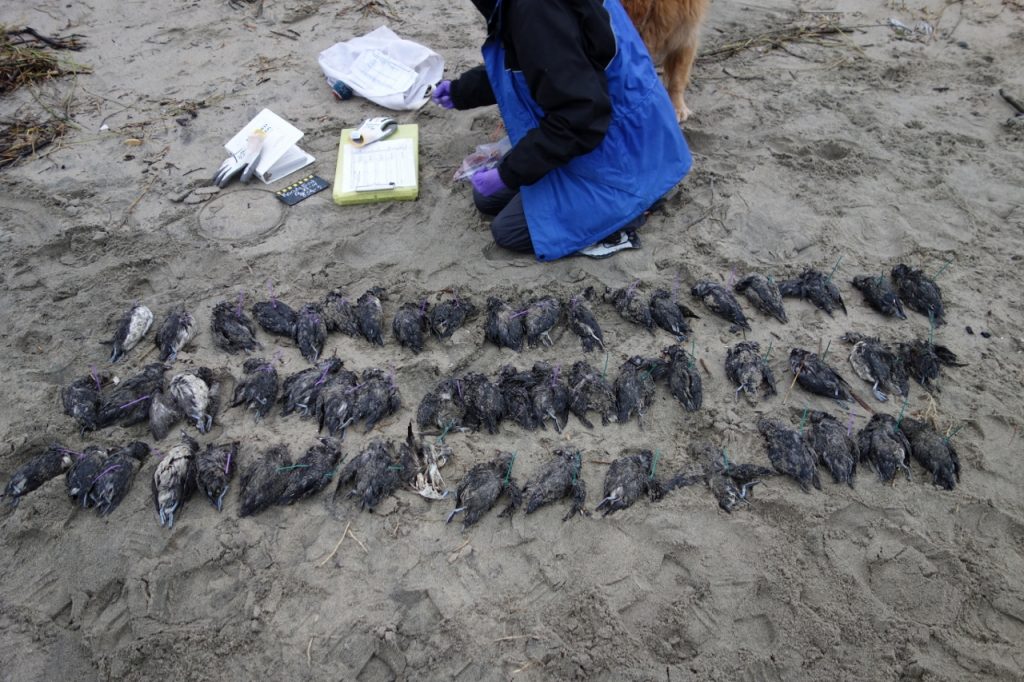Hi COASSTers,
Thank you for all of your help this month! We’ve really enjoyed seeing your photos and datasheets and hope your summer is getting off to a great start.
A big welcome to our new Alaska COASSTers. We just wrapped up a great series of Beached Bird trainings in Kodiak, Homer, Seward, Yakutat, and Sitka. We’re looking forward to bolstering our data collection in these areas.
As you get ready for your next survey, take a peak at your survey kit and let us know if you need any more datasheets, cable ties, chalk, etc. We’re happy to send supplies out to you right away.
Let’s take a look at what’s washed in recently:
 Lands End (AK) 02/22/15 found by Carol and Janet
Lands End (AK) 02/22/15 found by Carol and Janet
Wing: 19 cm
Tarsus: 35 mm
Alaska Foot Key – page 34
West Coast Foot Key – page 22
Choose webbed (go to Q2), choose completely webbed (go to Q3), choose 3 toes: all webbed (go to Q4), choose tarsus less than 50mm – Stop: ALCIDS.
Alaska Guide
On AL1, select wing chord greater than 15cm, Large Alcids. Since we don’t have a head, it could be any of the following: AL3, AL5, AL7, AL9, AL11, AL13. White underwing lining and white-tipped secondaries: must be a murre – Common Murre or Thick-billed Murre – AL3 or AL5.
West Coast Guide
On AL1, select wing chord greater than 15cm, Large Alcids. From there, choose between AL2, AL6, AL10 or AL12. Only one of these has a white underwing lining and white-tipped secondaries – Common Murre (since this bird was found in Alaska, could also be the similar species: Thick-billed Murre).
 Tsoo Yess North (WA) 1/25/15 found by Janet, Sally, Gail, Jim, and guest
Tsoo Yess North (WA) 1/25/15 found by Janet, Sally, Gail, Jim, and guest
Bill: 65 mm
Wing: 27 cm
Tarsus: 65 mm
Alaska Foot Key – page 34
West Coast Foot Key – page 22
Choose webbed (go to Q2), choose completely webbed (go to Q3), choose 4 toes: all webbed – Stop: POUCHBILLS.
Alaska Guide
On PB1, select wing chord less than 35cm – cormorant. The only one with a pale chin is rare in Alaska: Brandt’s Cormorant.
West Coast Guide
On PB1, select hooked bill with colored throat pouch, bill less than 100mm (10cm). Choose between PB2, PB4, PB6. Only one has a dark bill with a tan chin – Brandt’s Cormorant – correct!

COASST is excited to have a team of multilingual students who have volunteered to help with debris identification and translation. Beginning this week, we’ll be sharing some of their discoveries from COASSTer photos.
Here we have a container found by Keith on Oregon Mile 286. The writing in Japanese states “Oofunato Fish Market”. Japanese Studies major Devin reports that “Oofunato is a city in Iwate prefecture, east of Mt. Hikami and northeast of Kesennuma. As Iwate is a neighboring prefecture of Miyagi, the home of Sendai, it is possible that this is tsunami debris, or it is possibly just accidental litter from the Oofunato Fish Market.”


Take a look at this North American River Otter that Judy, Dave, and Karen found a few weeks ago at Diamond Point North in Washington. How can we tell the difference between sea otters and river otters? Check out the feet! Sea otters have paws in front and flippers in back, whereas river otters have paws in the front and back, as shown here.
Seen something on the beach you’ve always wondered about? Send us a photo!
Cheers,
Erika, Julia, Jane, Hillary, Charlie, Heidi, Jenn, and the COASST Interns


 Fishing Rock North (OR) 4/22/15 found by Ann
Fishing Rock North (OR) 4/22/15 found by Ann




























 Coronado Shores (OR) 12/14/14 found by Steven and Nancy
Coronado Shores (OR) 12/14/14 found by Steven and Nancy








